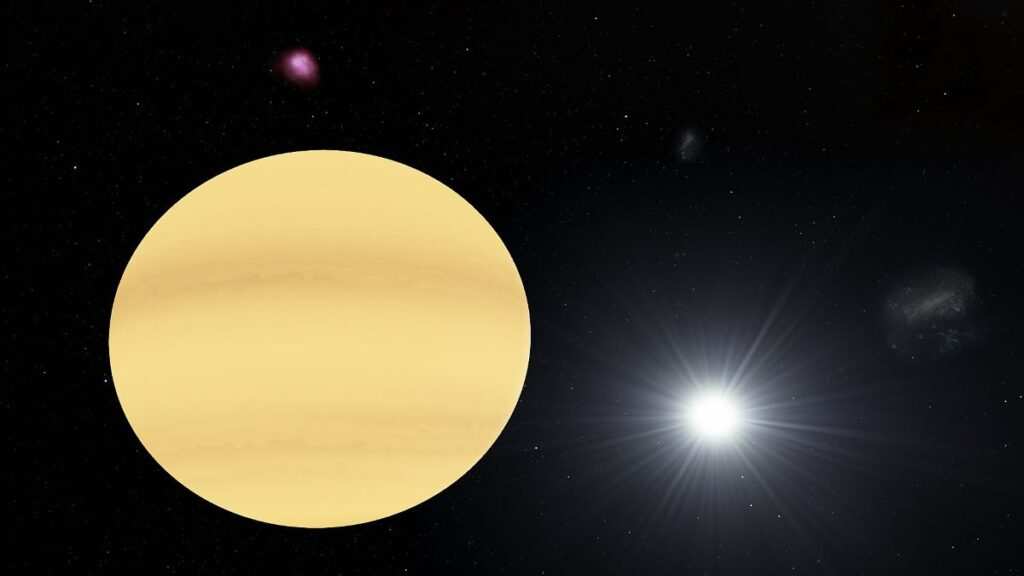The most recent discovery in space is a massive planet that appears to be composed of diamond. PSR J1719-1438b is a five-times-larger planet than Earth.
However, there are other bright worlds out there. Another planet that appears to have a lot of diamonds is 55 Cancri e.
Space never fails to amaze us
This sparkling object was once a component of a star, according to researchers. A neighboring neutron star gradually lost its outer layers, revealing a compact core that is rich in carbon.
This core finally crystallized into what scientists now refer to as a “diamond-like” planet due to extreme pressure. Astronomers have been astounded by its rarity and origin narrative, and it is around five times the size of Earth.
There are other glittering worlds than this one. A super-Earth located just 41 light-years distant from Earth, 55 Cancri e, was recently the subject of an exciting observation by NASA’s James Webb Space Telescope.
This flaming planet is roughly nine times as massive as Earth and twice as broad. What could be more intriguing? It completes a full circuit of its host star in less than a day, circling it in just 17 hours!
However, there would be no peace and quiet on 55 Cancri e. The planet is probably covered in molten lava because surface temperatures can reach 2,400°C, which is hot enough to melt most metals. Scientists think that its surface may be continuously changing due to this intense heat.
There is compelling evidence of a secondary atmosphere, which may be the consequence of extreme volcanic activity that releases gases into space, thanks to data from the James Webb Space Telescope and earlier research by the Spitzer and Hubble telescopes.
The universe is incredibly diverse and wild, as seen by the finding of lava worlds like 55 Cancri e and diamond-like planets like PSR J1719-1438b.
Additionally, they force scientists to reconsider how planets arise and change in various cosmic contexts. What more sparkling secrets lie out there just waiting to be discovered?
What is PSR J1719-1438b?

As part of the High Time Resolution Universe Survey, a group of astronomers employed Australia’s Parkes radio telescope to make the discovery in 2011. They observed variations in the timing of the pulsar, which suggested the gravitational pull of a nearby small, dense object, which they discovered to be the planet.
PSR J1719-1438b was previously a typical star, similar to our Sun, according to scientists. However, the neutron star partner gradually depleted its mass, particularly the outer layers of helium and hydrogen. A dense core rich in carbon and oxygen was all that was left.
Just the carbon inside crystallized under the intense pressure, just like diamonds do deep in the Earth’s mantle. As a result, the relic of the dead star became a planet-sized mass composed primarily of diamond-like material called crystallized carbon.
The diamond material from PSR J1719-1438b would be worth quintillions of dollars if it could be mined and brought back to Earth, which is impossible. But this “wealth” is just cosmic fiction, orbiting at amazing speeds around a dangerous neutron star.


 Why Barcelona vs. Inter Was a Classic
Why Barcelona vs. Inter Was a Classic  Fan Falls from Clemente Wall During Pirates-Cubs Game
Fan Falls from Clemente Wall During Pirates-Cubs Game  Massive Wildfire Rages Near Jerusalem
Massive Wildfire Rages Near Jerusalem  Angelina Jolie Calls Gaza a “Mass Grave” for Palestinians
Angelina Jolie Calls Gaza a “Mass Grave” for Palestinians  Star Wars Fans Light Up Japan
Star Wars Fans Light Up Japan  Anti-Trump Protests Erupt Across U.S. Cities
Anti-Trump Protests Erupt Across U.S. Cities